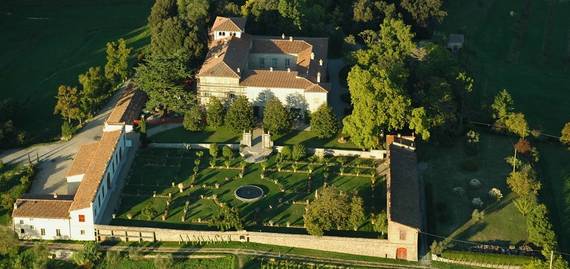There are no fewer than seven UNESCO World Heritage sites in Tuscany alone—more than in some entire countries. This has perhaps tended to diminish the importance of the achievement last year of a group of experts, led by Prof. Luigi Zangheri, to have twelve Medici villas and two gardens in and around Florence (out of a total of 36 which exist in Tuscany) accepted together as a single World Heritage Site. The proposal set before the international committee had to prove that not only are these fourteen villas and gardens unique, but also intimately connected one to the other through their historical and architectural features. All of them had to be already sufficiently protected by ‘buffer zones’ and thus inserted in a landscape which also has fundamental significance. Their new position under the protective wing of UNESCO will now ensure that they are preserved intact, together with their surroundings, in the future.

The fourteen villas concerned are as follows: the state-owned Villa di Careggi and Villa della Petraia, next to each other on the northern outskirts of Florence; the privately-owned Villa Medici on the old road up to Fiesole; Villa di Poggio Imperiale on the south bank of the Arno and the Boboli Gardens in the very centre of town.
A little further afield, also state-owned, is the Villa di Poggio a Caiano, in the province of Prato just outside Florence. Built for Lorenzo the Magnificent in 1480 by Giuliano da Sangallo, the classical elements in its architecture—which preceded by some 60 years the buildings of Palladio—are of astonishing novelty for the time. Close by, in a wonderful landscape, is the Villa di Artimino.
Close to Florence, on the old road to Bologna, the garden of Pratolino with its extraordinary sculpture of the Appennino by Giambologna, has also been included even though the villa itself (where Handel and Scarlatti performed) no longer exists. Less well-known villas included in the group are the Villa (or Castello) di Trebbio, privately owned, and the Villa di Cafaggiolo, both in the lovely countryside of the Mugello, some kilometres north of Florence.
The last three, the Villa di Cerreto Guidi, the Palazzo Mediceo in Seravezza, and the Villa La Magia outside Quarrata, will certainly gain fame by being included in the list. The pretty village of Cerreto Guidi, between Empoli and Vinci to the west of Florence, is well outside the usual tourist itinerary and the villa is very well preserved and interesting for its architecture. The villa in Seravezza is in the foothills of the Apuan Alps, from which came the marble used for the decoration of many of the villas. The delightfully-named Villa La Magia (‘magic’) is the least well-known of them all: it is outside Quarrata, southeast of Pistoia, and was built by an architect favoured by the Medici, Bernardo Buontalenti, for Francesco I in the 16th century and is surrounded by a park.
When drawing up the dossier for UNESCO, the influence of these villas and gardens on the rest of the world was also underlined, and the history of the interchange of experts between the Medici and the ruling families of Europe (for instance, at the end of the 16th century Henri IV had Ferdinando I send the Francini brothers to France, where from then on they were put in sole charge of all the hydraulic works in the country).
Although today’s tourism is (sadly) often no longer connected to ‘culture’, it is to be hoped that these villas will now receive many more visitors and draw people out of the city of Florence itself, which can become uncomfortably over-crowded. Italy’s economy needs a thriving tourist ‘industry’: but only last week there was news that Germany now receives more tourists than Italy (and both countries are still far behind France and Spain). UNESCO’s own website describes the Medici villas and gardens here.
by Alta Macadam, author of Blue Guide Florence. Image from the wesbsite of Villa La Magia.






